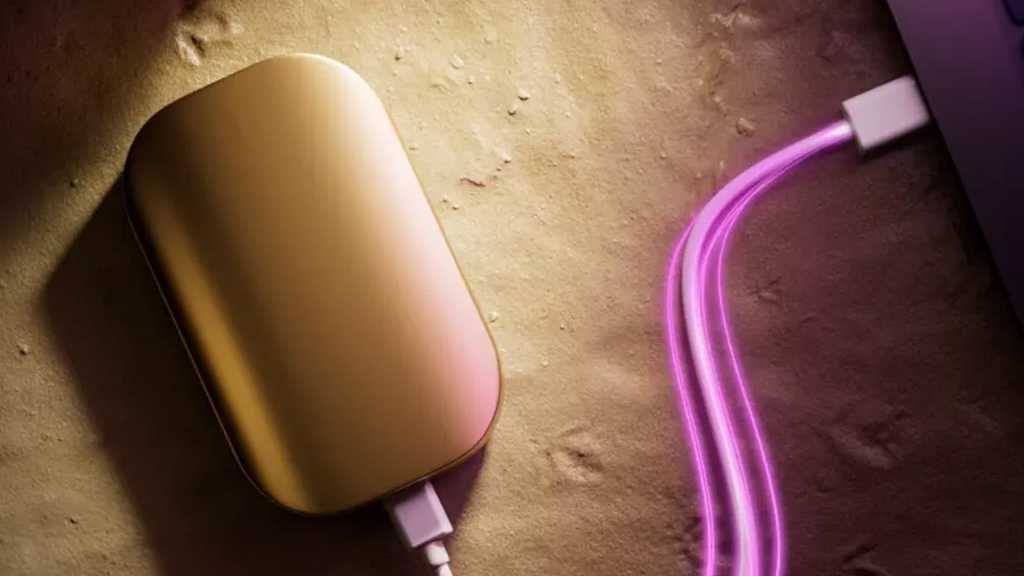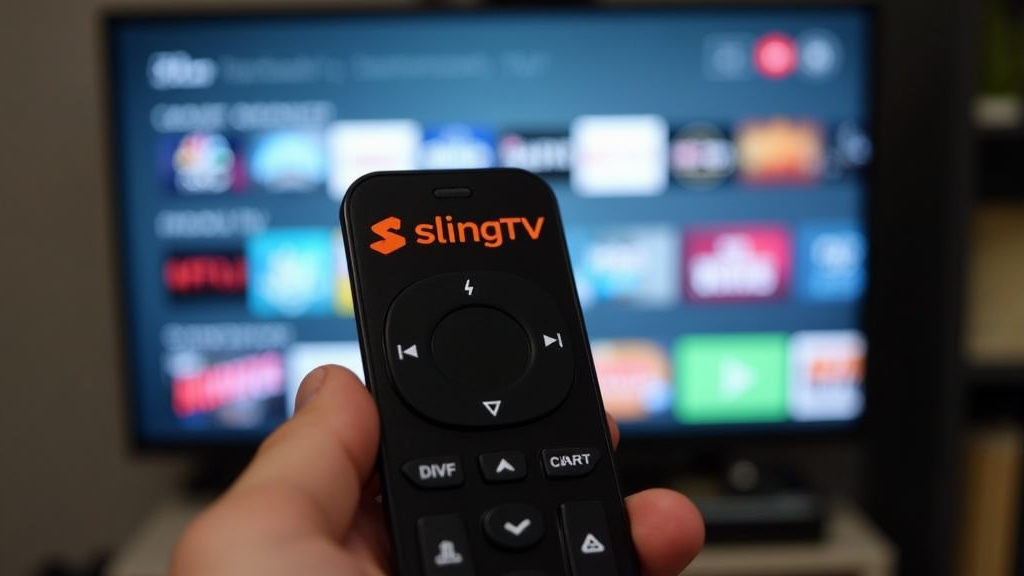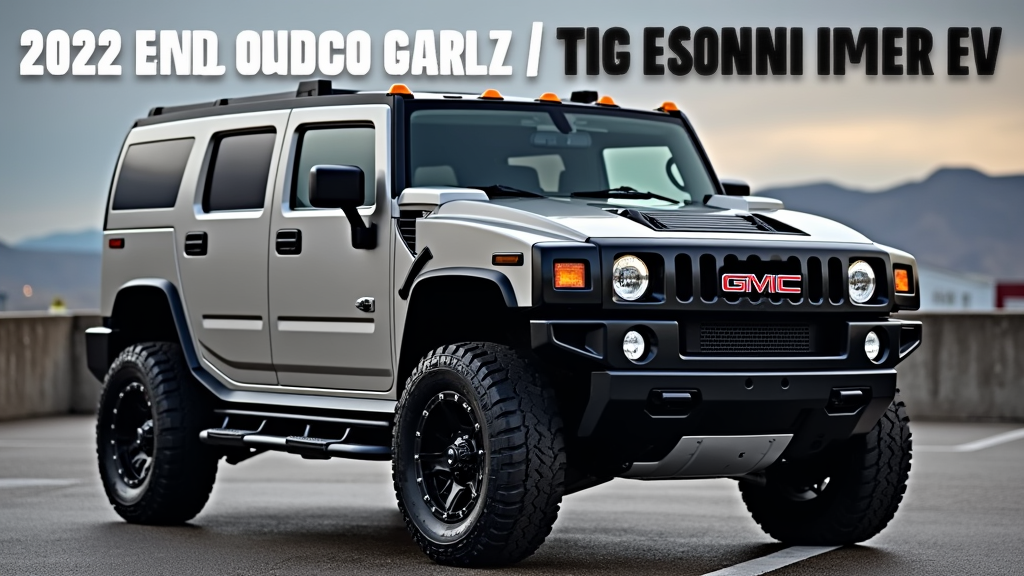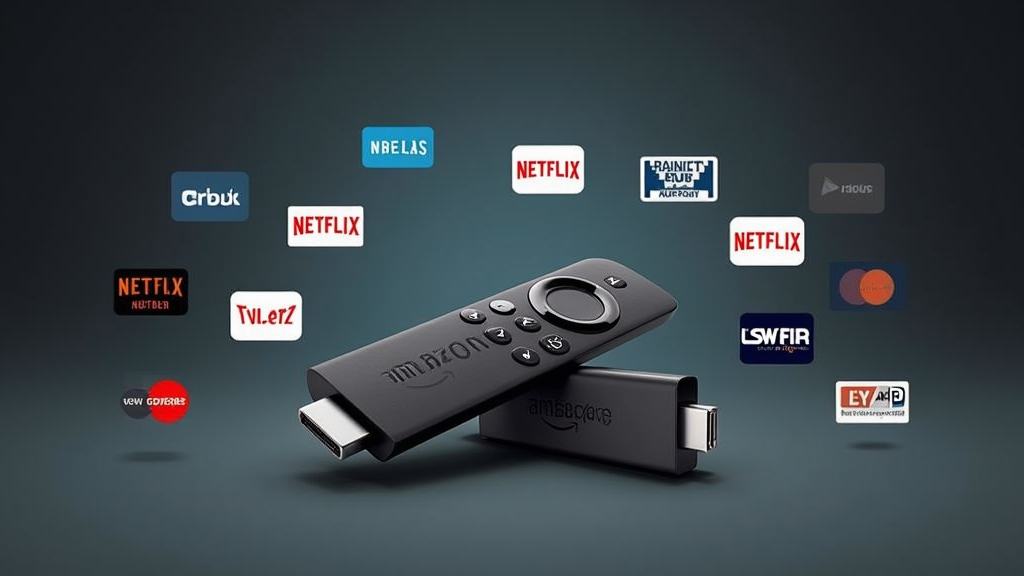Maybe your gaming laptop doesn’t have enough storage. Or you simply want an easy way to make your game library portable. An external SSD can fix both of these issues (and more) by providing an easy way to expand storage that you can take on the go.
But choosing an external SSD means sorting through a dizzying array of options, and making a poor choice can leave you feeling hard done by. Lucky for you, we’ve done the testing and can offer some sure-fire recommendations that are guaranteed to help, and not hinder, your gaming setup.
Scroll below our recommendations to learn more about our evaluation process and what to look for when buying an external SSD for gaming.
Lexar SL600 Blaze – Best 20Gbps external SSD for gaming
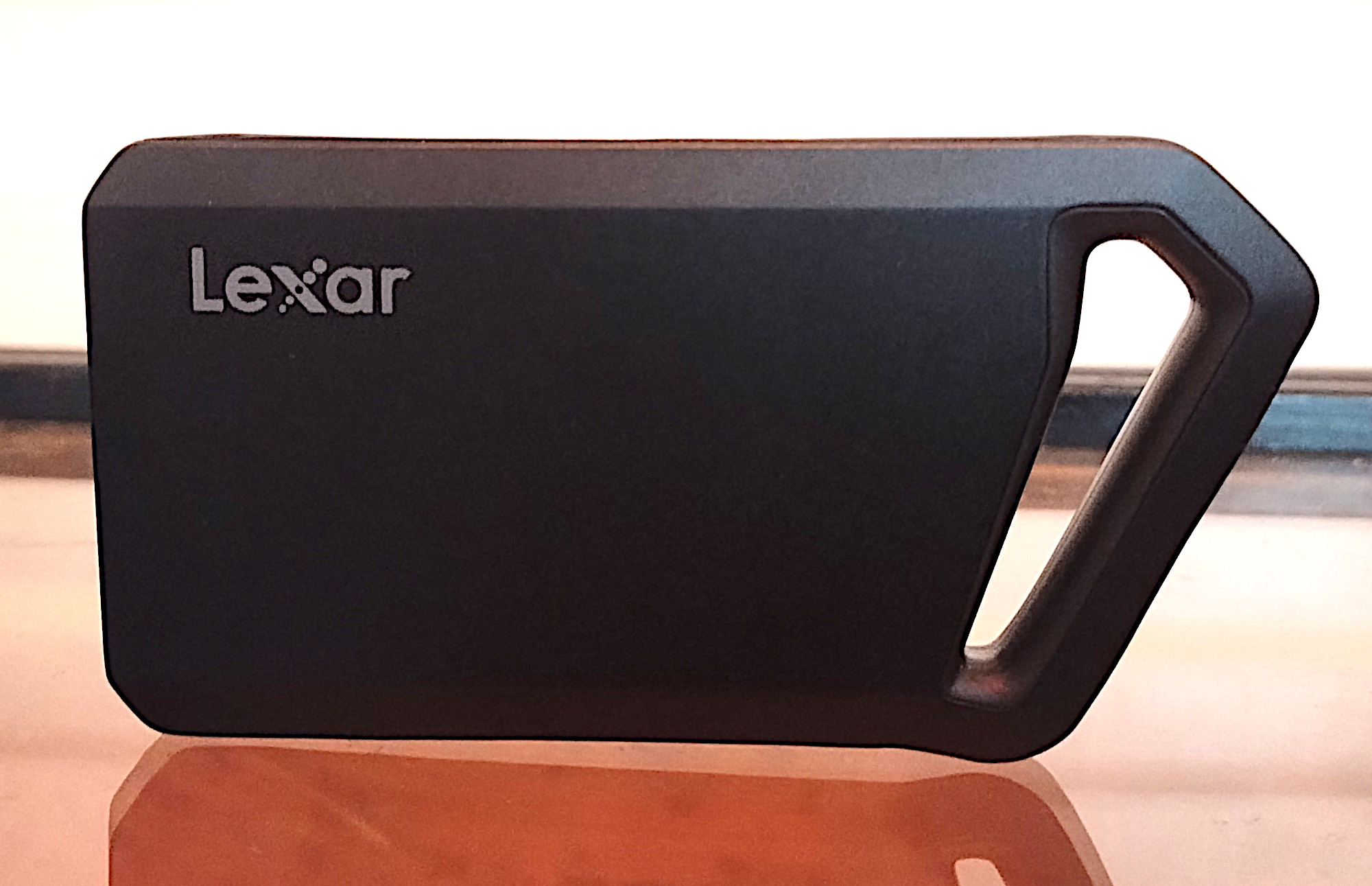
Pros
- Good 20Gbps performer
- Top bang for the buck
- Five-year warranty
Cons
- 4TB model not yet available
Price When Reviewed:
1TB: $129.99 I 2TB: $175
The competition is very close in the top tier of 20Gbps external drives, with the big-name contenders trading wins up and down the benchmark charts. But a winner is a winner, and in the end, the Lexar overtook our previous champ, Crucial’s X10 Pro, even if only by a hair.
The upshot is that you can expect excellent performance from the Lexar SL600. It also comes in a uniquely shaped form factor, complete with an opening to accommodate a lanyard, for easy toting. Gamers might appreciate that you can even add some bling by opting for the SL660 variant, which features RGB lighting within its miniature handle. The drive comes with the standard five-year warranty.
When performance is this closely matched among products, the determining factor should be price. And here, too, the SL600 is neck-and-neck with the Crucial X10 Pro, and priced slightly to significantly cheaper than some of its competitors, at least as of this writing — particularly at the 2TB level.
Read our full
Lexar SL600 review
PNY RP60 20Gbps USB SSD – Best rugged 20Gbps external SSD for gaming
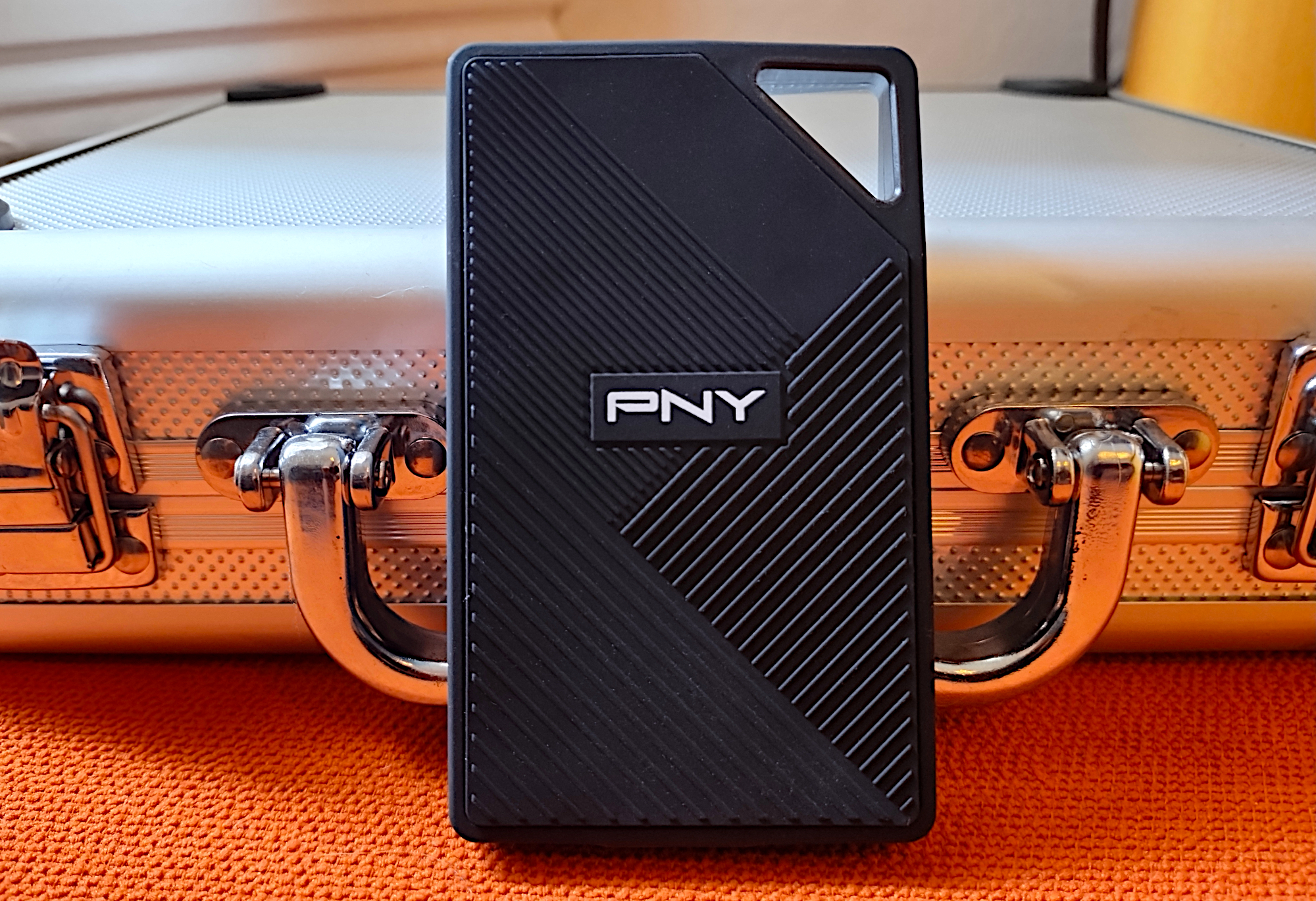
Pros
- Handsome, IP65-rated design (dust-proof, water-resistant)
- Good 20Gbps performance
- Nice flat Type-C USB ribbon cable
Cons
- USB port plug tether is difficult to reinsert.
Price When Reviewed:
1TB: $100 I 2TB: $180
If you tend to take your gaming drive everywhere, and/or you’re not the most careful person with hardware, a ruggedized external SSD is a practical answer.
The PNY RP60 offers more than just a rugged IP65-rated exterior that protects against dust and water droplets; and while very handsome and lightweight to boot, the drive is also an admirable performer, even besting one of the fastest 20Gbps drives we’ve tested — the Crucial X10 Pro — in a couple of our tests.
The RP60 is also competitively priced at $100 and $160 for 1TB and 2TB, respectively.
Read our full
PNY RP60 20Gbps USB SSD review
Sabrent Rocket Nano V2 – Most portable 20Gbps external SSD for gaming
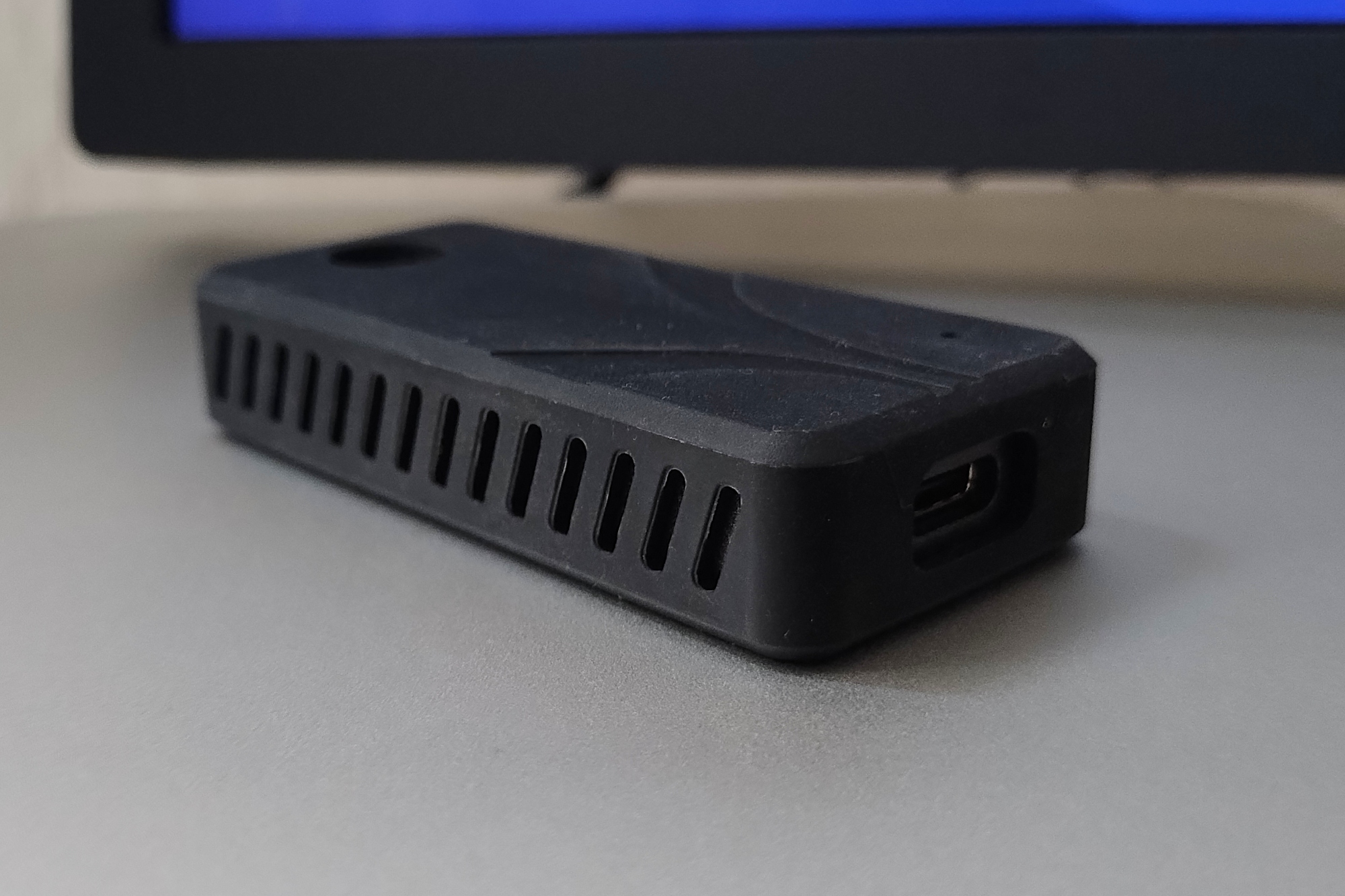
Pros
- Extremely small profile
- Shock-absorbing silicone jacket
- Top-flight packaging
- Good overall performance
Cons
- A tad behind the 20Gbps curve performance-wise
Price When Reviewed:
1TB: $120 I 2TB: $200 I 4TB: $450
Best Prices Today:
If you’re after a very small SSD that you can easily fit into a pocket, the Sabrent Rocket Nano V2 is that. This USB 3.2×2 20Gbps drive measures a petite 2.73 inches long, 1.16-inches wide, and 0.44-inches thick. It weighs a dainty 1.7 ounces.
Of course, you’ll probably want to slide on its included shock-absorbing silicone jacket (shown in picture), which will add .06 inches to all its dimensions, while giving it a badass look.
But looks aside, the Nano V2 is a solid performer. It wasn’t quite at the same level as our top picks in everything, but it traded wins and losses within the pack. For instance it was second only to the Crucial X10 Pro in our 450GB write test. And it took the top spot in CrystalDiskMark 8’s random writes, and was very competitive in random reads.
This wee drive also comes in up to 4TB capacities, making it an all-around good choice if you’re looking to get a lot of storage and performance in a tiny package. We’re also fond of its five-year warranty and the nifty metal box it comes in, which can be repurposed for other uses.
Read our full
Sabrent Rocket Nano V2 review
Adata SE920 – Best USB4 external SSD for gaming
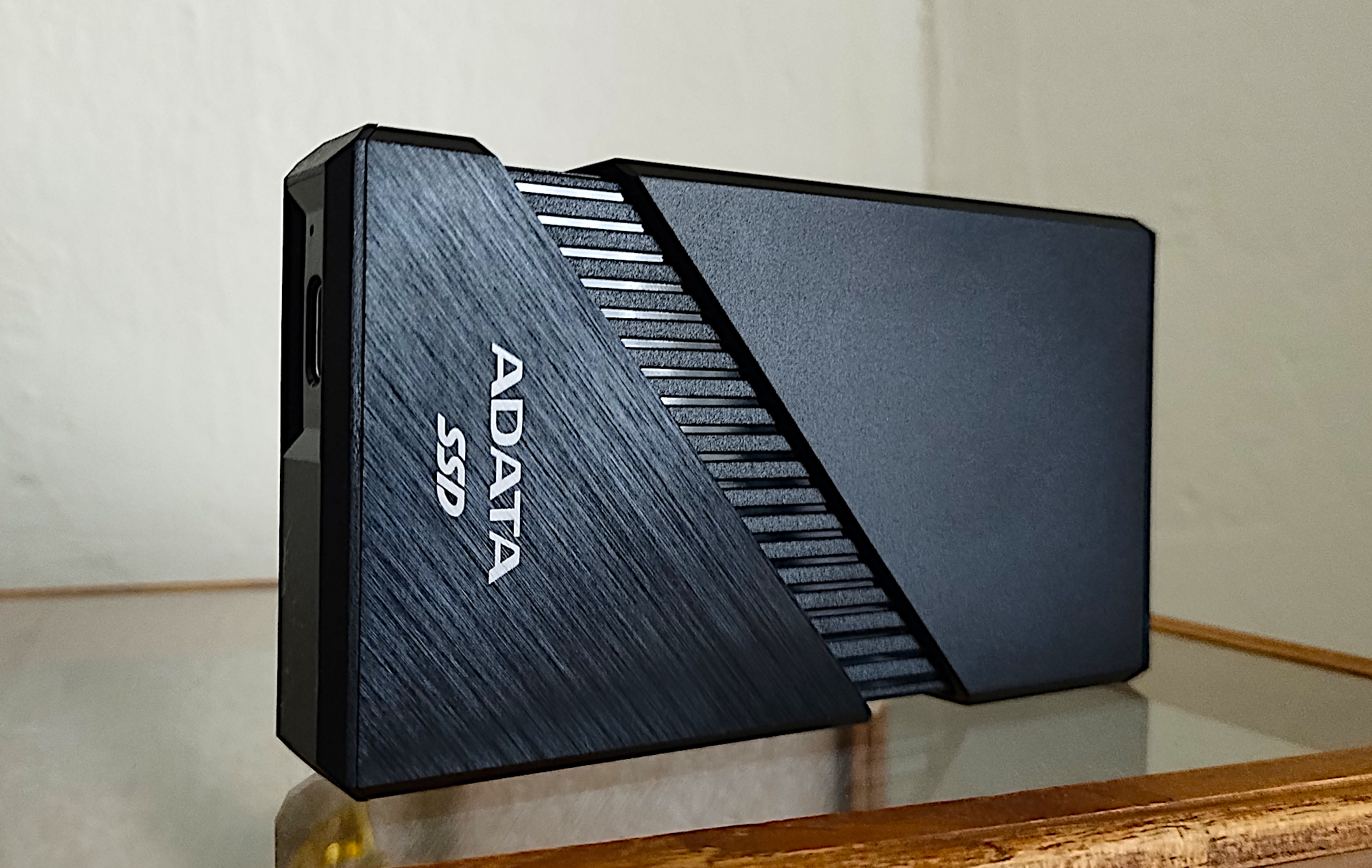
Pros
- Fastest external storage we’ve tested (at 40Gbps)
- Affordable for the ilk
- Stylish enclosure
- Available up to 4TB
- Also fast on the Mac
Cons
- Pricier than USB 3.2×2 (20Gbps)
Price When Reviewed:
1TB: $140 I 2TB: $200 I 4TB: $380
A USB4 external SSD isn’t for everyone. Not only does your PC need to support the spec in order to take advantage of the 40Gbps transfers, but you’ll also need to be willing to pay a premium for the privilege.
If you’re ready to enter the club, however, the Adata SE920 EX will reward you with the fastest USB4 performance that we’ve experienced, and at a much more affordable price than our previous pick for USB4, the OWC Express 1M2 — we’re talking $160 for a 1TB Adata SE920 versus $230 for the OWC drive. And if you want a lot of capacity, the Adata SE920 EX comes with up to 4TB, for a reasonable $450 (compared to OWC’s $550).
In almost every benchmark, the SE920 EX beat the OWC Express 1M2 at 40Gbps performance, albeit by small margins. It also comes with a nifty built-in fan, which is activated by sliding open the enclosure. This kept our drive noticeably free of heat during our benchmark tests.
The SE920 EX is also quite portable at 4.13 inches long by 2.52-inches wide by 0.62-inches thick, and weighing 7 ounces — another advantage it has over the bulkier OWC Express 1M2.
In the end, the choice for a USB 4 external SSD is clear.
Read our full
SE920 External SSD review
Other notable external SSDs for gaming:
The TerraMaster D1 SSD Plus 40 Gbps drive enclosure, populated with the NVMe drives of your choosing, is an interesting proposition, as is the Asus TUF Gaming A2 enclosure, which is also rugged; the Crucial X10 is a tiny, weatherproofed drive that can hold up to 8TB of storage in a small form-factor; there’s a lot to like about the Sandisk Extreme Pro SSD with USB4 such as its handsome design and relative affordability, but connection issues and comparably lackluster 40Gbps performance left us unamazed; the Addlink P21 has a compelling combination of good performance and a striking design; while the Corsair EX400U is on the slow side for a USB4 external SSD, it’s also less expensive than the competition; the Seagate Game Drive SSD is targeted at PS4/PS5 owners, and the 10Gbps SSD is very fast for its class and attractively styled, complete with a Playstation logo, but it’s relatively pricey; the Lexar Armor 700 is a 20Gbps drive that can withstand some abuse — perfect for the gamer on the go, or the accident-prone; the Adata SD810 is a solid 20Gbps drive, save for writing large amounts of data, where it slows down. That being said, the 4TB capacity is a particularly good value at just $300.
How PCWorld tests external drives
Drive tests currently utilize Windows 11 24H2, 64-bit running off of a PCIe 4.0 Samsung 990 Pro in an Asus Z890-Creator WiFi (PCIe 4.0/5.0) motherboard. The CPU is a Core Ultra i5 225 feeding/fed by two Kingston Fury 32GB DDR5 4,800MHz modules (64GB of memory total). Both 20Gbps USB and Thunderbolt 5 are integrated and Intel CPU/GPU graphics are used. SSDs involved in the test are mounted in either a HighPoint 7604A 16x 4-slot PCIe 5.0 RAID adapter card or a single-slot Asus ROG M.2 PCIe 5.0 adapter.
We run the CrystalDiskMark 8, AS SSD 2, and ATTO 4 synthetic benchmarks to find the storage device’s potential performance, then a series of 48GB and 450GB transfers tests using Windows Explorer drag-and-drop to show what you’ll see under Window, as well as the far faster FastCopy to show what’s possible. A two-drive 25GBps RAID 0 array on the HighPoint 7604A 16x PCIe 5.0 adapter card is used as the secondary source/destination.
Each test is performed on an NTFS-formatted and newly TRIM’d drive so the results are optimal. Note that in normal use, as a drive fills up, performance may decrease due to less NAND for secondary caching, as well as other factors. This can be less of a factor with the current crop of SSDs with far faster late-generation NAND.
Caveat: The performance numbers shown apply only to the drive we were shipped and to the capacity tested. SSD performance can and will vary by capacity due to more or fewer chips to shotgun reads/writes across and the amount of NAND available for secondary caching. Vendors also occasionally swap components. If you ever notice a large discrepancy between the performance you experience and that which we report, by all means, let us know.
Note also that some of the SSDs in this roundup were tested using other equipment and methodologies which you can read about in the standalone reviews.
To learn more about our testing methodology see PCWorld’s article on how we test external SSDs.
Why you should PCWorld for external drive reviews and buying advice
We are PCWorld. Our reviewers have been putting computer hardware through its paces for decades. Our external drive evaluations are thorough and rigorous, testing the limits of every product — from performance benchmarks to the practicalities of regular use. As consumers ourselves, we know what makes a product exceptional. For more about our testing process, scroll to the bottom of this article.
Who curated this article?
Having started computing by flipping switches, Jon Jacobi has witnessed storage morph from punch cards and tape to solid state. He’s been using and testing HDDs, SATA SSDs, and NVMe SSDs for PCWorld for well over two decades. To paraphrase a well-known commercial, you might say he’s seen a thing or two.
FAQ
What’s the fastest external interface?
The fastest PC external interfaces are as follows, in descending order: 80Gbps Thunderbolt 5, 40Gbps USB4/Thunderbolt 3 and 4, 20Gbps USB 3.2×2, 10GBps USB 3.2, then 5Gbps USB 3.x.
What causes an external SSD to fail?
While mechanical hard drives are much more prone to failure than SSDs, it is still possible for an SSD to fail. Generally it’s the result of a controller failure, although that’s an increasingly rare occurrence; it’s also a relatively easy fix/reset for someone who knows the SSD’s internals such as a recovery service. SSDs will also eventually wear out, though this only precludes further writing to the unit. You can still read what’s on the drive, so it’s not the disaster a HDD failure can be.
Why does Windows say my external drive is smaller than specified?
This discrepancy is due to the difference between the binary and decimal number systems, their nomenclatures, and a Microsoft miscue. Your 2TB drive indeed has two trillion bytes of storage, and if you look at the byte count that Windows displays in a drive’s properties dialog, this should be what you see. This, in the International System of Units (SI/decimal), is two terabytes, or 2TB. This is the standard language vendors use as consumers are far more familiar with base 10.
However, Windows uses the newer International Electrotechnical Commission (IEC) binary multiples 2^10 (Kibibyte/KiB), 2^20 (Mebibyte/MiB), 2^30 (Gibibyte/Gib). Binary multiples are larger numbers (one KiB is 1,024) so when Windows divides the total bytes by the IEC system, the you get something like 1.8TiB for a 2TB drive. Alas, Windows labels this as 1.8TB, misleading the user.
Other reasons you might not see as much available storage in the properties tab are formatting or partitioning. The file system uses some storage for file location and size info, etc. Also, some drives come with a small partition containing software so the main partition will be smaller than the drive’s total capacity.
How long will my external SSD last?
SSDs don’t wear out or break mechanically like a hard drive, but their cells can only be written to so many times. SSDs generally have a TBW (terabytes that may be written) rating, but this is rarely provided by vendors for external SSDs. Hint: They may not use the same SSD inside throughout the product lifespan.
Most internal M.2 NVMe TLC SSDs are rated for around 600TBW per terabyte, and QLC types for around 200TBW, though the type of NAND in use is also rarely provided by vendors. That’s a lot of data, and a lot of SSDs are rated well below what they might achieve. You can guesstimate by using a utility to see how much data you write to an SSD a day and then doing the math.
External SSD warranties are generally between three and five years, but as with all such things, it’s a financial risk calculation for the company. As is the TBW. Our best guess based on experience is perhaps a decade. However, certain models have had issues long before that — generally due to a flaw or failure in the bridge chip or controller.

